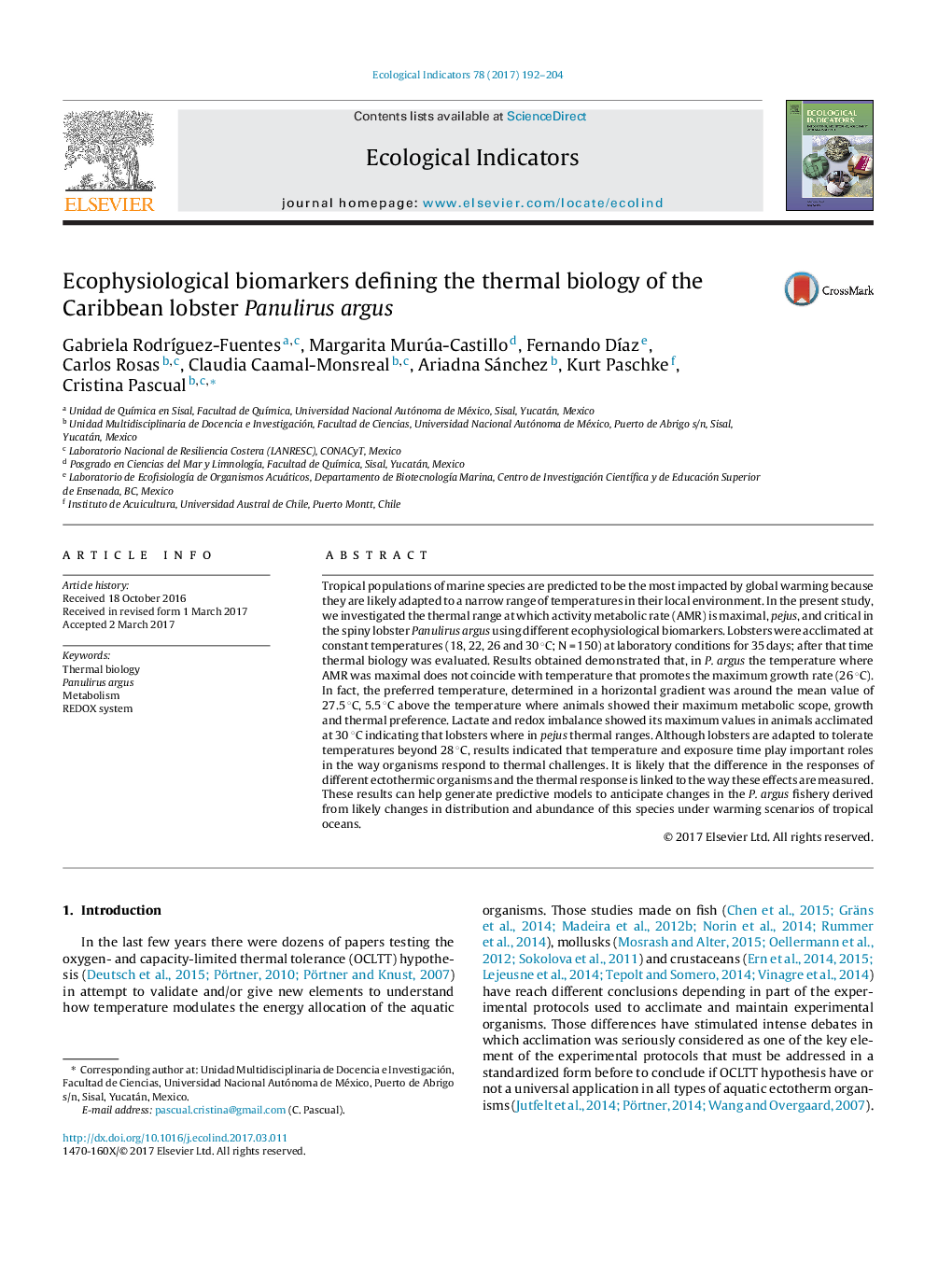| Article ID | Journal | Published Year | Pages | File Type |
|---|---|---|---|---|
| 5741627 | Ecological Indicators | 2017 | 13 Pages |
Abstract
Tropical populations of marine species are predicted to be the most impacted by global warming because they are likely adapted to a narrow range of temperatures in their local environment. In the present study, we investigated the thermal range at which activity metabolic rate (AMR) is maximal, pejus, and critical in the spiny lobster Panulirus argus using different ecophysiological biomarkers. Lobsters were acclimated at constant temperatures (18, 22, 26 and 30 °C; N = 150) at laboratory conditions for 35 days; after that time thermal biology was evaluated. Results obtained demonstrated that, in P. argus the temperature where AMR was maximal does not coincide with temperature that promotes the maximum growth rate (26 °C). In fact, the preferred temperature, determined in a horizontal gradient was around the mean value of 27.5 °C, 5.5 °C above the temperature where animals showed their maximum metabolic scope, growth and thermal preference. Lactate and redox imbalance showed its maximum values in animals acclimated at 30 °C indicating that lobsters where in pejus thermal ranges. Although lobsters are adapted to tolerate temperatures beyond 28 °C, results indicated that temperature and exposure time play important roles in the way organisms respond to thermal challenges. It is likely that the difference in the responses of different ectothermic organisms and the thermal response is linked to the way these effects are measured. These results can help generate predictive models to anticipate changes in the P. argus fishery derived from likely changes in distribution and abundance of this species under warming scenarios of tropical oceans.
Related Topics
Life Sciences
Agricultural and Biological Sciences
Ecology, Evolution, Behavior and Systematics
Authors
Gabriela RodrÃguez-Fuentes, Margarita Murúa-Castillo, Fernando DÃaz, Carlos Rosas, Claudia Caamal-Monsreal, Ariadna Sánchez, Kurt Paschke, Cristina Pascual,
